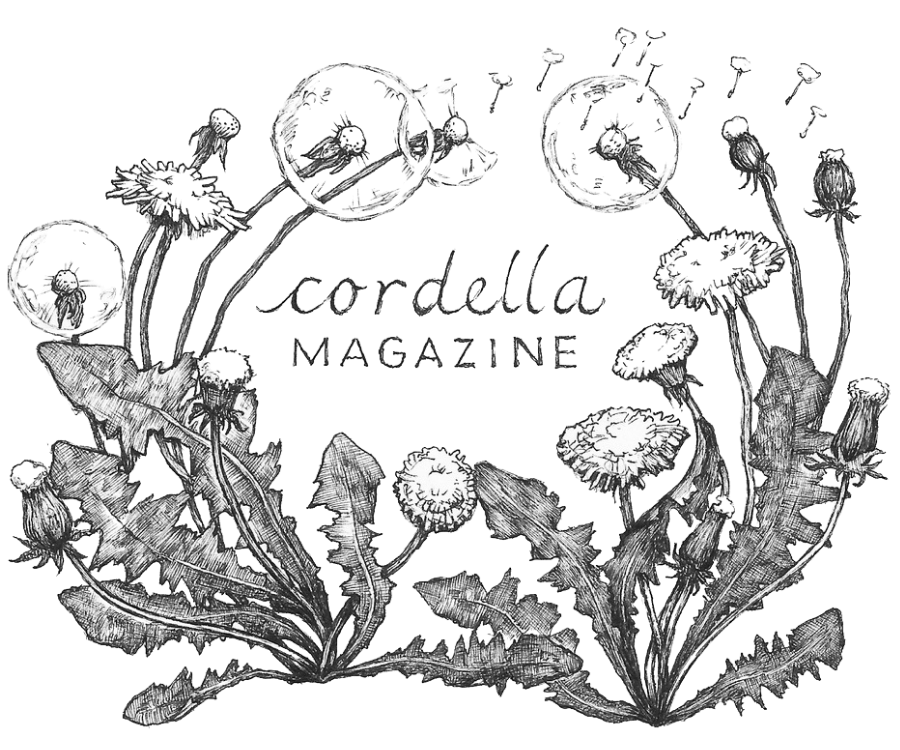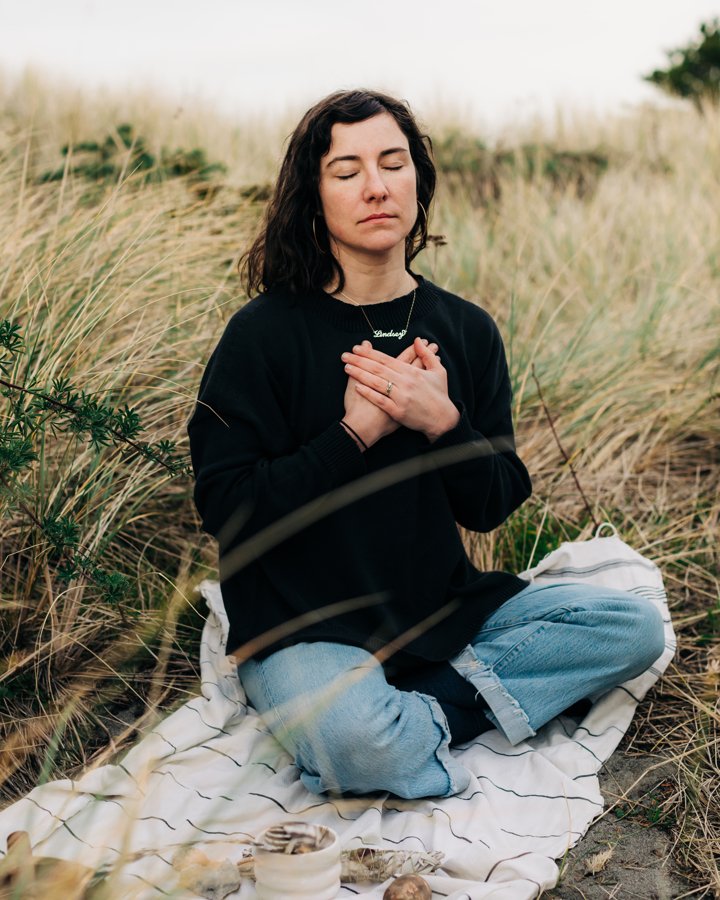My Birth Certificate is a Breath
LindsEy Wayland
The breath was my first kin.
It is hard to say the moment this concept began to unfurl within me as truth. It felt less like a lightning bolt and more like walking through a meadow at dawn with the mist low and the dew drops underfoot and after a while, suddenly the body is wet. The breath was my first path to kinship with Self. The breath linked my spirit and my body—it was the subtle air that connected my whole Self to the this beautiful earth gift. Breathing is the thing we do upon arriving in earthy bodies, and it is the last thing we do upon departing our earth vessel. The breath has been my closest kin, too, on this journey.
I often think of the wind or the air that we breathe and how it effects the still lake—breath, wind, spirit is grounded in matter—we see the invisible in the visible when we breathe, when the wind whispers over the lake the water ripples. The breath supports our emotional journey, our trek to center, and our nervous system’s capacity for regulation. John Conger shares that “the sympathetic nervous system is an exceedingly emotional centre, and it rules to a great extent the emotional part of our psychology, not the mental part. The cerebrospinal system controls the mind. Emotions are often mixed up or obscure, they cause confusion, and may even make people lose their minds. The word ‘sympathetic’ shows that it has to do with the emotions; it comes from the Greek word meaning to suffer, to feel compassion, to feel together with, so it has the connotation of connection or relatedness. A mental emotion is an isolated emotion, you alone get angry, but the sympathetic emotion has almost a cosmic character, as if you were suffering with many, as if you were connected with the whole world.”
When I began working in the mental health field I worked with adolescents, and I would always say, “hold hands and stick together in the real world.” It wasn’t long after that I learned about the ventral vagal state being supported by co-regulation and connection with others. Today when I lead breath work groups, I often think of how breathing together in sacred space and meditating together cultivates connectivity to the whole world—past, present, and future, body, mind, and soul.
The Self is wholeness (note the capital S). “The self,” as Carl Jung writes in his Collected Works Volume 12, “is not only the center, but also the whole circumference which embraces both conscious and unconscious; it is the center of this totality, just as the ego is the center of consciousness.” The breath is the subtle body of spirit that bridges soma and psyche, or body and soul. In Collected Works Volume 7, Jung says the Self is equal to “the God within us.” There is a numinous quality to the Self. Touching it or dreaming of it feels alive in a joyful and transformational way.
I grew up with an active imagination; I was a vivid storyteller in a spiritually connected family. We lived in a house my father built on a rattlesnake path in Texas hill country, a dry bed creek on a dirt road called Spotted Horse Trail. My dad had a wood shop and was a fire fighter in Austin. My mom was a brilliant seamstress and artist, ballerina, and stayed home with my sister and I. She came as a black sheep from a military family with a lineage steeped in depth psychology, spiritual awakening, and beautiful matrilineal strength.
When I was an older child my mother fell into a depression that felt unshakable; she would move in and out of this state. I would be sent outside for hours at a time, running through the woods for respite from the house, which was locked anyway. The breath was my first mother.
There was a breath practice I used every single day. No one taught me, I just intuitively practiced when I sat in the woods. “I breathe, I am. I am, I breathe” I’d say this affirmation as I breathed in as slowly as I could and breathed out as slowly as I could.
I think my entire life depended upon my long hair flying in the wind through the back woods, dried mesquite branches catching my tresses and breaking off in the tangles. Sitting for hours, breathing. My entire life depended upon the respite of my feet in the mud of spring in the dry bed creek, avoiding poison ivy (but not very well). My entire life depended on the woods enveloping me when the house locked me out.
In summer, I would spend most of the day alone outside with my journal and a pencil, stories and my imagination filling page after page. I would observe tiny insects for hours. My dogs would follow me and encircle my writing space in the open woods. I would build nature forts—actual wooden forts from supplies I brought from my dad’s wood shop. I followed the sun patches on the oak leaves as the summer would wind down into autumn. I would breathe in the air of seasons changing. My life did depend on this dream of nature coursing through my veins. My life depended upon me knowing it like the clouds know the sky, like the sprouts know the soil, the fish the ocean. I needed to know I was a metaphor and also the poem itself. My life depended upon this teaching.
There is a dark night of the soul that happens when life feels so dark and bleak but leads us to an illuminated ascent, far brighter because of its deep descent into darkness. Often people have more than one dark night of the soul in a lifetime. In every descent I’ve made into darkness, into what felt hopeless, my breath was the kindred which buoyed me up again.
I look back and I’m dazzled that my life is a life of service, a service I love and that am good at it. I am a thirty-five year old poet, symbologist, and breathwork meditation teacher. A mother, a partner, a calligrapher, and a depth psychology scholar. An intuitive counselor, a spiritual wellness educator, an energy healer. I have many titles, some of the time I eschew them all and become a bone in the meadow under the full moon, but most of the time I am just plum beside myself to be doing what I’ve been learning, honing, and loving in a sacred kinship since I was a toddler.
More than ever, as this world spins madly on, my connection to breath is an anchor into kinship with Self. The breath as a symbol for the divine way of being in the world today. The breath as an antidote to illness; many breath techniques even boost immunity. The breath a symbol of transformation, liberation, and intuition. The breath as kin.
Lindsey Wayland
Lindsey Wayland is a poet, a poetry therapist, and a breathwork and meditation teacher. She has fifteen years experience studying and serving youth, and is an ethnographer of adolescence, a story keeper, a symbologist, and a depth psychology scholar. She explores transformation through individual unique essence and empowers with the belief that harmony depends upon each of us aligning with our calling. Lindsey believes that finding our voice and expressing our truth is the path to liberation and a life of poetry.
Lindsey's wisdom is a bow to the self-regulating psyche and our breath as the sacred and simple ritual of vitality. Her poetry is is steeped in her twenty-one-year relationship to meditation and spirituality, illuminated by metaphysical inquiry and dreamscapes, and simultaneously grounded in sensate and sensual earthy loam. Her writing winds its way around the human psyche with curiosity and a miner’s lamp in the dark. Her very essence inspires the art of a beautiful life as poetry. Learn more and connect at lindseywayland.com.










